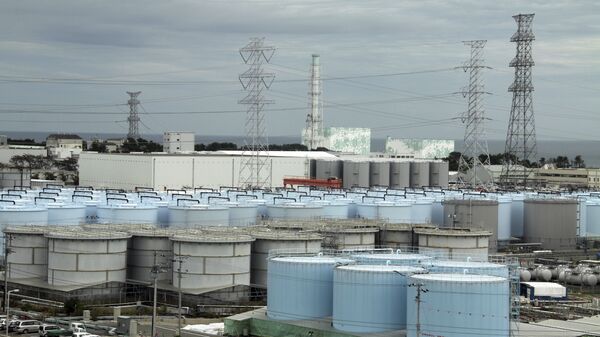A toxic mix of groundwater and rainwater exposed to the damaged nuclear reactors at Fukushima Daiichi in eastern Japan has presented Japanese officials with a disposal problem for years. More than 1 million tons of contaminated water are now stored in more than 1,000 storage tanks around the site, in various stages of decontamination.
However, the clock is ticking: Fukushima operator Tokyo Electric Power Co. (TEPCO) says it is due to hit maximum capacity by 2022, and what will be 1.37 million tons of water by then will need to be disposed of or properly treated to be made safer.
“With transparency in mind, Japan will continue providing the international community with information (on the Fukushima situation),” Koichiro Matsumoto, the Foreign Ministry’s director of international cooperation, told 27 diplomats representing 22 countries and regions on Wednesday, Reuters reported.
Seoul raised the issue last month during a larger trade spat with Tokyo, with the South Korean Foreign Ministry saying, "If it's deemed necessary, we will … closely cooperate with our neighbors in the Pacific … to actively cope with the problem of the discharge of contaminated water," Yonhap News Agency reported.
When the most powerful earthquake in Japanese history struck offshore of the city of Sendai in March 2011, it produced a huge tsunami that washed miles inland, killing tens of thousands of people. It also damaged the ostensibly-tsunami-proof Fukushima plant, causing three of its reactors to melt down after they overheated. While the situation was brought under control, the huge problem of radioactive cleanup remains, as does the continued growth of radioactive water at the site.
Various proposals have been floated for disposal, including injecting the water deep underground or dumping the partially treated water into the Pacific Ocean.
“It will have a devastating effect on fishing in Fukushima,” Tetsu Nozaki, who heads the Fukushima prefectural federation of fisheries cooperative associations, told the Asahi Shimbun about dumping the water into the Pacific in March. Fishermen returned to the waters near Sendai in 2017, but their catch is still only 20% of pre-earthquake levels, the Asahi noted.
Tokyo has spent about 34.5 billion yen ($309 million) stemming the exposure of groundwater to the reactors with a massive earthen wall, but the site continues to accumulate roughly 100 tons of contaminated water per day, the Asahi noted.
The government was forced to admit last year that treatment had not proceeded as planned; nuclear plants typically treat their waste water to eliminate all radioactive elements except tritium, because tritium is both relatively harmless and also plentiful in the environment already.
Reprocessing all the water at Fukushima could take two years and would result in further delays to the enormous project of dismantling the wrecked reactors - which could take 40 years and cost up to 21.5 trillion yen ($192.5 billion), or roughly one-fifth of the Japanese government's annual budget.


